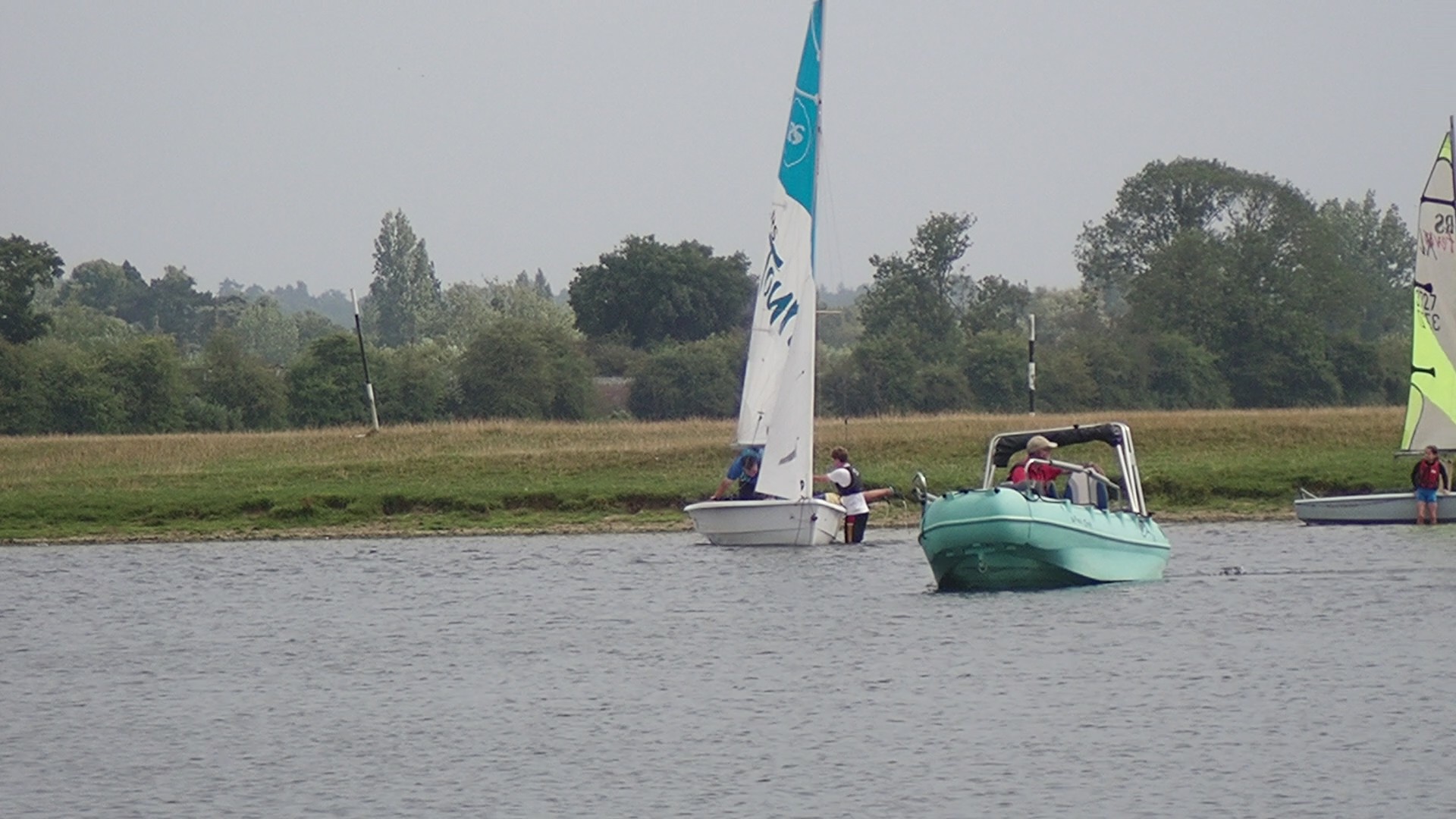admin Date , July 24, 2025 Sailing Previous Blog A Man and a buoy Comments (0)
The second day of the RYA level 2, 4 Day Course - We had a change of Instructor Jude who wanted to help us finish the course and learn how to trim the sails.
We arrived early and got the boats onto the water so we were all ready to go at 9:30am. With a large number of participants on the course we needed an extra powerboat to provide extra safetyboat cover. Enter the Whaly. So each morning as well as getting the the RS Toura ready we also had to get the Whaly ready.
The morning was dedicated to a single noble pursuit: staring at the telltales on the jib as if our very lives depended on them. I began to feel a bit like a falconer, scanning for the smallest twitch. If the telltale flapped, we adjusted the course. If it sagged, we adjusted the sail trim. If it looked happy, we panicked slightly, not quite sure what to do next.
It took us a while — and I do mean a long while — but gradually, ever so gradually, we started to get the hang of it. The elusive moment when the telltale streamed steadily and the sail took on that lovely curve... that was sailing harmony.
Naturally, just as we nailed it, the wind would shift.
Because this is the River Thames, not some obedient stretch of sea breeze. Here, the wind changes direction every time you look away. I'd heard whispers that out on the ocean, you can set your sails and they’ll hold steady for hours. Hours!
On the Thames? Five seconds is considered a solid run. Just enough time to feel smug, before you're yanking the jib in or letting it out again as the boat lurches and the crew shouts something about trees.
We swapped helm and crew duties frequently, each of us taking turns to squint at the telltales and try not to mutter darkly under our breath every time they misbehaved. The learning curve was steep, but the satisfaction of finally getting it right — even for five glorious seconds — was totally worth it.
Tomorrow’s goal: Tacking smoother, sailing straighter, and maybe — just maybe — holding a perfect jib shape for six seconds.
After a morning spent squinting at telltales like tea-leaf readers trying to predict wind shifts, Paul and I were ready for something new. Something simple. Something... like a lee shore landing.
Ah yes, the deceptively innocent phrase that sounds like something from a gentle Sunday afternoon sail: “Just land the boat on a beach with the wind behind you.” Easy, right?
Not exactly.
What they don’t mention upfront is this:
So there we were, aiming at a little patch of shoreline known locally — and quite accurately — as Cows Beach. A charming name, until you realise it's less “golden sands” and more four inches of brown water atop three inches of suspiciously squishy mud.
The challenge was to come in slowly, but not too slowly, otherwise we’d stall and drift sideways into the reeds like lost ducklings. We had to approach at an angle, turn the boat just right, and not ram the beach at full tilt. Then leap out like a seasoned sailor — or in my case, a startled pensioner trying not to lose a boot.
The beaching manoeuvre itself is oddly satisfying... until you hit the mud. My foot disappeared. Paul landed in something with a squelch. And while some of our crewmates leapt gracefully ashore, I somehow managed to exit the boat like a confused flamingo.
Getting back out? Oh, that’s when the fun begins.
We had to pull the bow around, wade in up to our shorts, then — with all the poise and strength of a confused jellyfish — throw ourselves into the boat. I attempted my best Superman dive, but one of the Feva sailors said it looked more like a salmon beaching itself at the end of its life cycle.
Rude, but fair.
We practised this noble art over and over again until we could glide in, land, and launch with a sense of rhythm and coordination. Or at least, we stopped crashing and falling over. That counts.
Apparently, we’ll be doing more of this on Wednesday’s sail, so we’d best keep practising our splashdown techniques.
Sailing Lesson of the Day:
Lee shore landings are 20% technique, 30% timing, and 50% mud.
